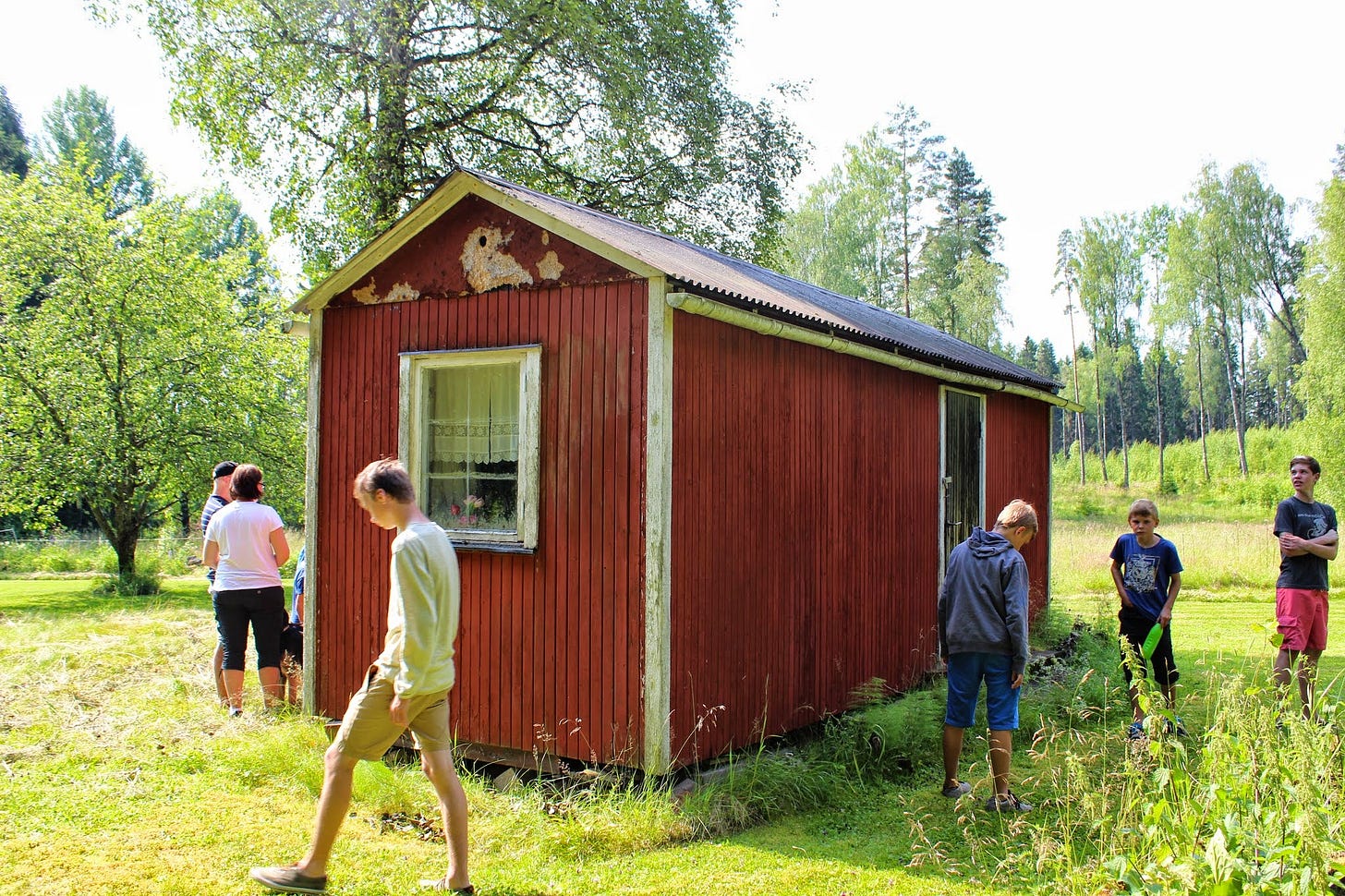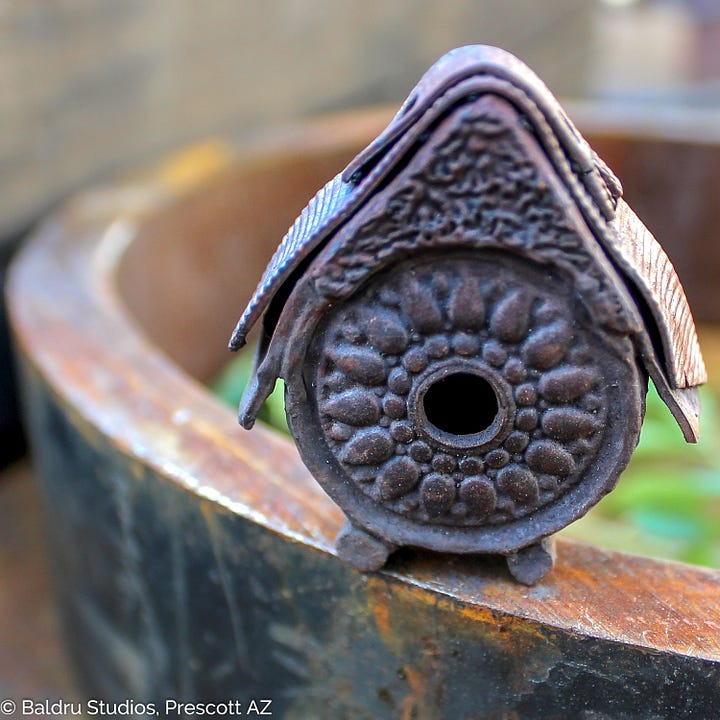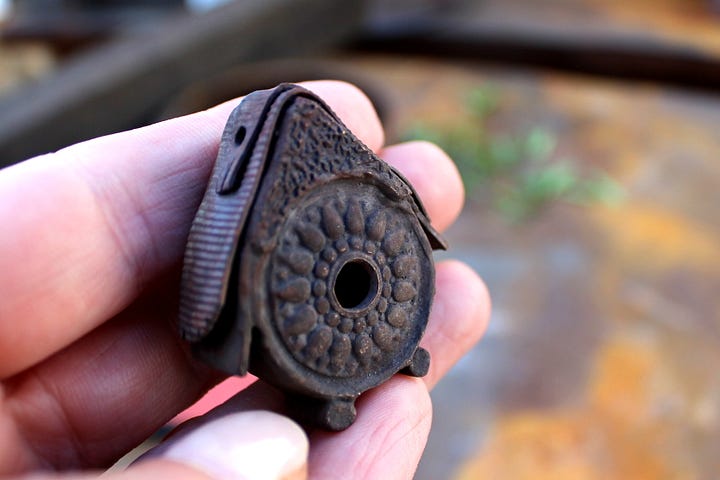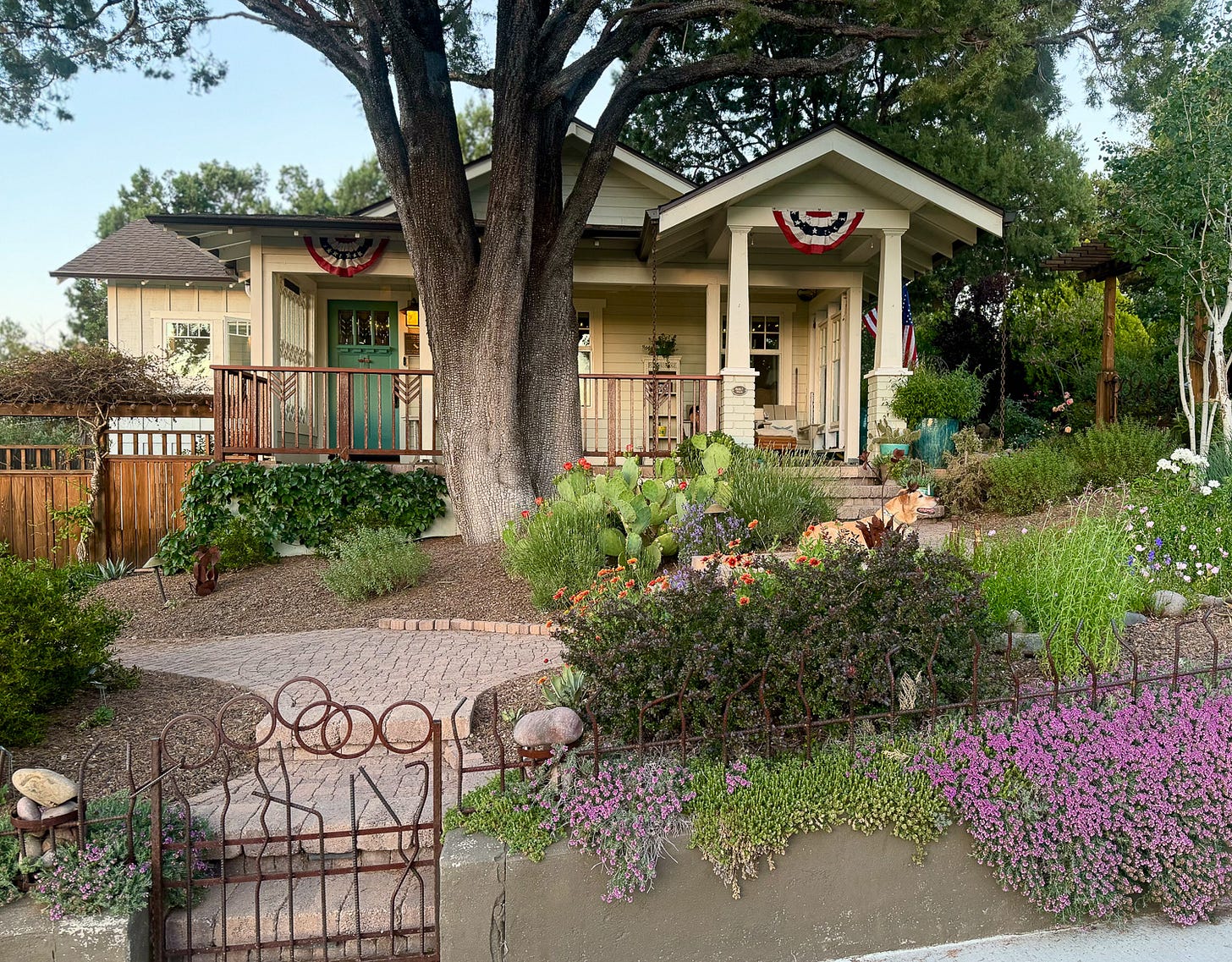The Myth of Tiny, The Magic of Small
Rethinking home size, sustainability, and what it really means to live well
Big, Tiny, or Just Right?
We’ve all heard the Goldilocks story:
“Too hot, too cold.” “Too big, too small. Just right.”
When it comes to our homes, the same principle applies. Somewhere between the excess of “bigger is better” and the extremes of tiny living is a sweet spot: small, not tiny.
Of course, Goldilocks wasn’t thinking about sustainability. But maybe she was onto something: extremes rarely work, and the sweet spot is usually “just right.” The same is true for our homes.
Sustainability isn’t only about solar panels, recycled materials, high-tech systems, or less consumption. It’s also about space - how much of it we take up, and how much we truly need to live well.
For decades, Americans have equated bigger with better:
more square footage
more rooms
more storage. For more stuff!
Then came the pendulum swing: the tiny-house craze, with its glossy Instagram shots and dreamy promises of financial freedom, minimalism, and living light on the land.
It all sounds so romantic, and in theory, tiny homes do check some sustainability boxes.
But here’s the truth I’ve come to: tiny is not the answer. Small is.
Why Tiny Doesn’t Work
I don’t dislike tiny homes. Far from it. In fact, I spent many childhood summers in Sweden living in a little red cabin tucked into a meadow, and those memories remain some of the most magical of my life. I get the romantic pull.

But the idea that tiny homes could broadly solve our environmental and housing challenges is, in my view, a myth.
They’re expensive. Cost per square foot is often sky-high unless you’re skilled enough to DIY from the ground up. And have masses of time on your hands.
They’re impractical. Most municipalities don’t know what to do with them, making it hard to find a legal place to park one.
They’re not scalable. At best, tiny homes serve a sliver of individuals who want a dramatic lifestyle shift, or those with the means to own one as a second property for short getaways.
Tiny homes are not a path to widespread sustainability. Tiny homes are a niche movement. They are wonderful for camping or a summer retreat. Charming, yes. Even Instagram-worthy. But not a model that’s going to shift how the majority of us actually live day to day.


In researching this idea and trying to learn more about the realities of tiny-home living, I came across a couple of worthwhile articles. Maybe worth a read later:
The Magic of Small Homes
Now, small homes. That’s a different story.
Small (but not tiny) homes carry many of the same benefits as tiny homes, without tipping into the realm of impracticality. They’re more energy-efficient, easier to care for, far more affordable to maintain, and encourage simpler, less cluttered living.
But most importantly, small homes are realistic.
They already exist in large numbers. Think about the millions of older bungalows and cottages waiting to be refreshed rather than replaced. I know my mountain “village” here in Northern Arizona is a perfect example - the downtown is overflowing with these gorgeous gems. All the while, massive brand new homes continue to be built on the outskirts of town.
They’re comfortable, truly luxurious, when designed well. They are easy to live in, and make it possible to age-in-place.
They can actually make a dent in housing availability and affordability.
Here’s the magic! As a designer, I know a smaller footprint doesn’t mean giving up beauty, elegance, comfort or flexibility.
With thoughtful planning, a small home can feel abundant: spacious, light-filled, functional, elegant, and deeply personal.
A clever floor plan or a perfectly placed window makes all the difference.
It’s not about the square footage.
A Cultural Shift
Of course, intentionally choosing smaller homes (and doing so before you are forced to due to age or illness) is about more than square footage. It’s about values.
That’s pretty ingrained in the “American dream.”
Do we need a formal dining room we use twice a year? Do we need storage for things we never touch, and never really needed in the first place?
What does a home that truly supports our daily life look like? Honestly?
It will take more than logic to spark a shift. It will take desire.
Tiny homes had the benefit of TV shows and viral aesthetics. Maybe it’s time for a new kind of story. A new trend. One that celebrates the beauty and comfort of small living.
Here’s the secret: Living small doesn’t mean living less. It can mean living better.
Thoughtfully designed small homes are cozy, efficient, refined, and deeply sustainable. They free us from excess while still offering room to breathe.
Why I Care
This is personal for me. It’s why I live how I do and why I started The Whiskey Porch.
We chose intentionally to do a major downsize the moment our youngest kiddos headed off to college. We were both around 50 years old. No where near retiring.
We went from a big city to mountain village. From a large, new tract home with a pool to a small, historic cottage with no garage.
Best decision of our lives.
👉🏼You can read that story here: We Accidentally Bought a Bungalow
My design work is rooted in this same belief - that small, thoughtful, and beautifully crafted spaces offer a richer way of living. Admittedly, the majority of my clients are still those in oversized brand-new homes. But they appreciate this ethos and approach.
I’m not here to sell you on anything, but if you’re curious, you’ll see this philosophy woven through the projects and stories I share on my studio website.
Related:
On My Bookshelf: Design Classics for the Small Home & Bungalow Life - a collection of the timeless design books that continue to shape my approach to small-scale living.
Let’s Keep the Conversation Going
I truly believe small, not tiny could be one of the most meaningful cultural shifts we make toward sustainability and a more balanced life.
But it starts with us asking questions, telling stories, and reimagining what “home” really means.
So I’d love to hear from you:
Could you see yourself thriving in a smaller home?
What would feel like “enough” space for you?
And if you’re already living small, what do you love most about it?
Drop your thoughts in the comments. I’d love to spark a conversation. After all, that’s how real change begins.
With contentment & possibility,











I've been thriving in 500 square feet for 35 years. The house was built the same year I was born, 1949. Several houses in the area were built from the same plan, each remodeled differently over the years. I suspect the plan was meant as a motel cottage, not a real residence.
Most of the publicized 'tiny houses' are seemingly aimed at a brutalist esthetic. They don't look cozy and don't use their space as efficiently as a travel trailer, which is much more affordable.
I love this post. I grew up in a small NYC apartment. Moved to the suburbs and as our family grew, and like the tide swelling, so did our home sizes. Since our children have grown up and like the tide, moved out, our homes have gradually become smaller. The one we're currently in feels just right. It's cozy but still affords the refuge of a studio, which is where I'm writing this from!